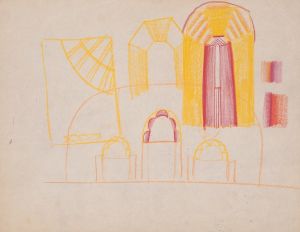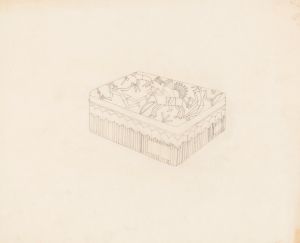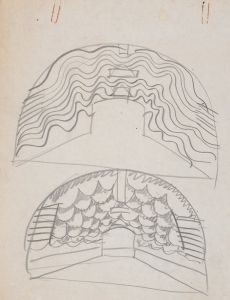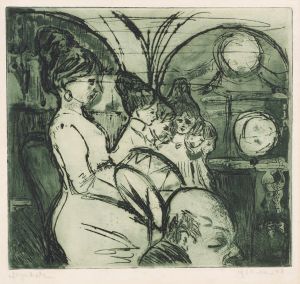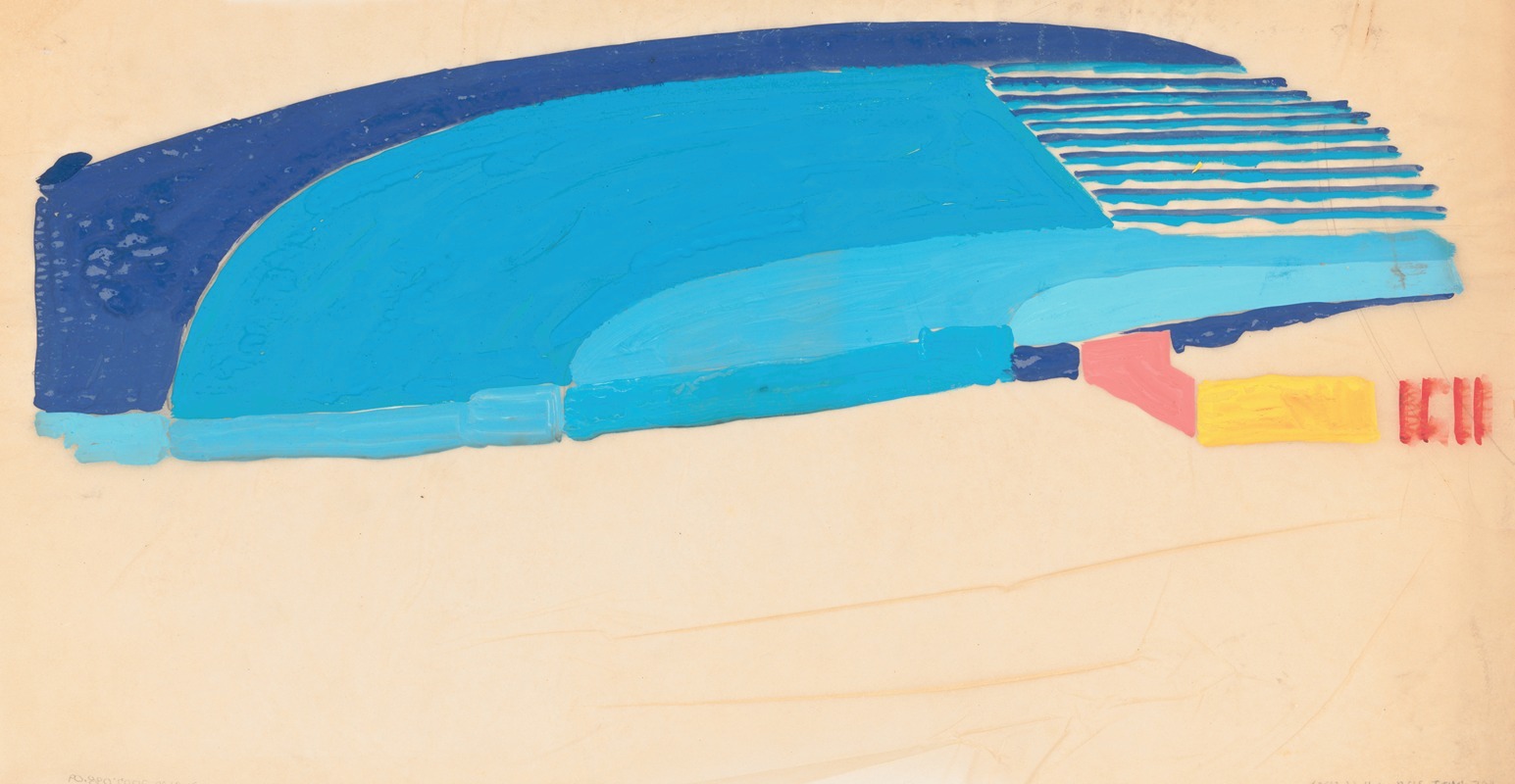
Suggested treatments of Auditorium for Theatre and Concert Hall, New York World’s Fair 1939.] [Sketch for Scheme A
A hand-painted replica of Winold Reiss’s masterpiece Suggested treatments of Auditorium for Theatre and Concert Hall, New York World’s Fair 1939.] [Sketch for Scheme A, meticulously crafted by professional artists to capture the true essence of the original. Each piece is created with museum-quality canvas and rare mineral pigments, carefully painted by experienced artists with delicate brushstrokes and rich, layered colors to perfectly recreate the texture of the original artwork. Unlike machine-printed reproductions, this hand-painted version brings the painting to life, infused with the artist’s emotions and skill in every stroke. Whether for personal collection or home decoration, it instantly elevates the artistic atmosphere of any space.
Winold Reiss, a German-American artist known for his vibrant use of color and innovative design, created the artwork titled "Suggested treatments of Auditorium for Theatre and Concert Hall, New York World’s Fair 1939. Sketch for Scheme A." This piece was part of his contributions to the 1939 New York World's Fair, an event that showcased the theme "The World of Tomorrow" and aimed to offer a hopeful vision of the future in the aftermath of the Great Depression.
Reiss was renowned for his ability to blend modernist aesthetics with traditional motifs, and his work often reflected a deep appreciation for cultural diversity. His involvement in the 1939 World's Fair was significant, as the fair itself was a monumental event that attracted millions of visitors from around the world. It was an opportunity for artists and designers to present forward-thinking ideas and innovative designs that aligned with the fair's futuristic theme.
The sketch by Reiss for the auditorium's treatment was part of a larger vision for the Theatre and Concert Hall, which was intended to be a central cultural venue at the fair. Although specific details about the design elements in "Scheme A" are limited, Reiss's work typically incorporated bold colors and geometric patterns, which were hallmarks of his style. His designs often aimed to create an immersive and dynamic environment, enhancing the experience of the audience through visual stimulation.
Reiss's artistic approach was influenced by his background and education in Germany, where he studied at the Royal Academy of Fine Arts in Munich. His move to the United States in 1913 marked the beginning of a prolific career that spanned various forms of art, including portraiture, interior design, and public murals. Reiss's work was characterized by a synthesis of European modernism and American themes, and he became particularly known for his portraits of diverse American subjects, including Native Americans and African Americans, which were groundbreaking at the time.
The 1939 New York World's Fair itself was a platform for showcasing technological advancements and cultural achievements. It featured pavilions from numerous countries and corporations, each presenting their vision of the future. The fair's emphasis on innovation and progress was mirrored in the artistic contributions of individuals like Reiss, whose designs for the Theatre and Concert Hall would have been intended to complement the fair's overarching narrative of optimism and forward-thinking.
While specific records of the implementation of Reiss's "Scheme A" for the auditorium are scarce, his involvement in the fair highlights the intersection of art and architecture during this period. Reiss's work contributed to the cultural tapestry of the fair, reflecting the aspirations of a world looking toward a brighter future. His legacy as an artist who embraced and celebrated cultural diversity continues to be recognized and appreciated in the context of American art history.





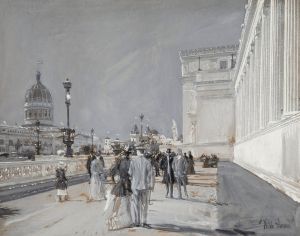
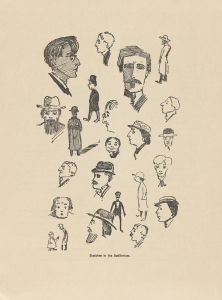

![Design for Figures of Music Building, New York World’s Fair, 1939.] [Elevation detail](/imgs/249284/s/winold-reiss-design-for-figures-of-music-building-new-york-worlds-fair-1939-elevation-detail-b48f5853.jpg)
![Designs for cover of Hotel Management Magazine.] [Grey cover design with yellow band](/imgs/249312/s/winold-reiss-designs-for-cover-of-hotel-management-magazine-grey-cover-design-with-yellow-band-4e353d2a.jpg)
![Designs for theater with black-framed proscenium and boldly colored settings.] [Study for stage light wall decoration, Caf ̌Crillon](/imgs/249331/s/winold-reiss-designs-for-theater-with-blackframed-proscenium-and-boldly-colored-settings-study-for-stage-light-wall-decoration-caf-crillon-27adcd0f.jpg)
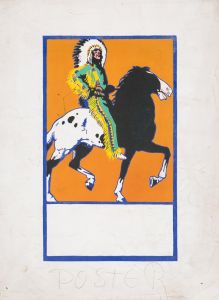
![Design sketches for stepped, three-panel, painted decorative folding screens.] [Drawing of plans, elevation, and details](/imgs/249416/s/winold-reiss-design-sketches-for-stepped-threepanel-painted-decorative-folding-screens-drawing-of-plans-elevation-and-details-cebab690.jpg)
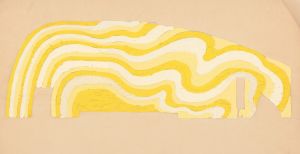
![Suggested treatments of Auditorium for Theatre and Concert Hall, New York World’s Fair 1939.] [Sketch for Scheme A](/imgs/249446/s/winold-reiss-suggested-treatments-of-auditorium-for-theatre-and-concert-hall-new-york-worlds-fair-1939-sketch-for-scheme-a-e530668f.jpg)
